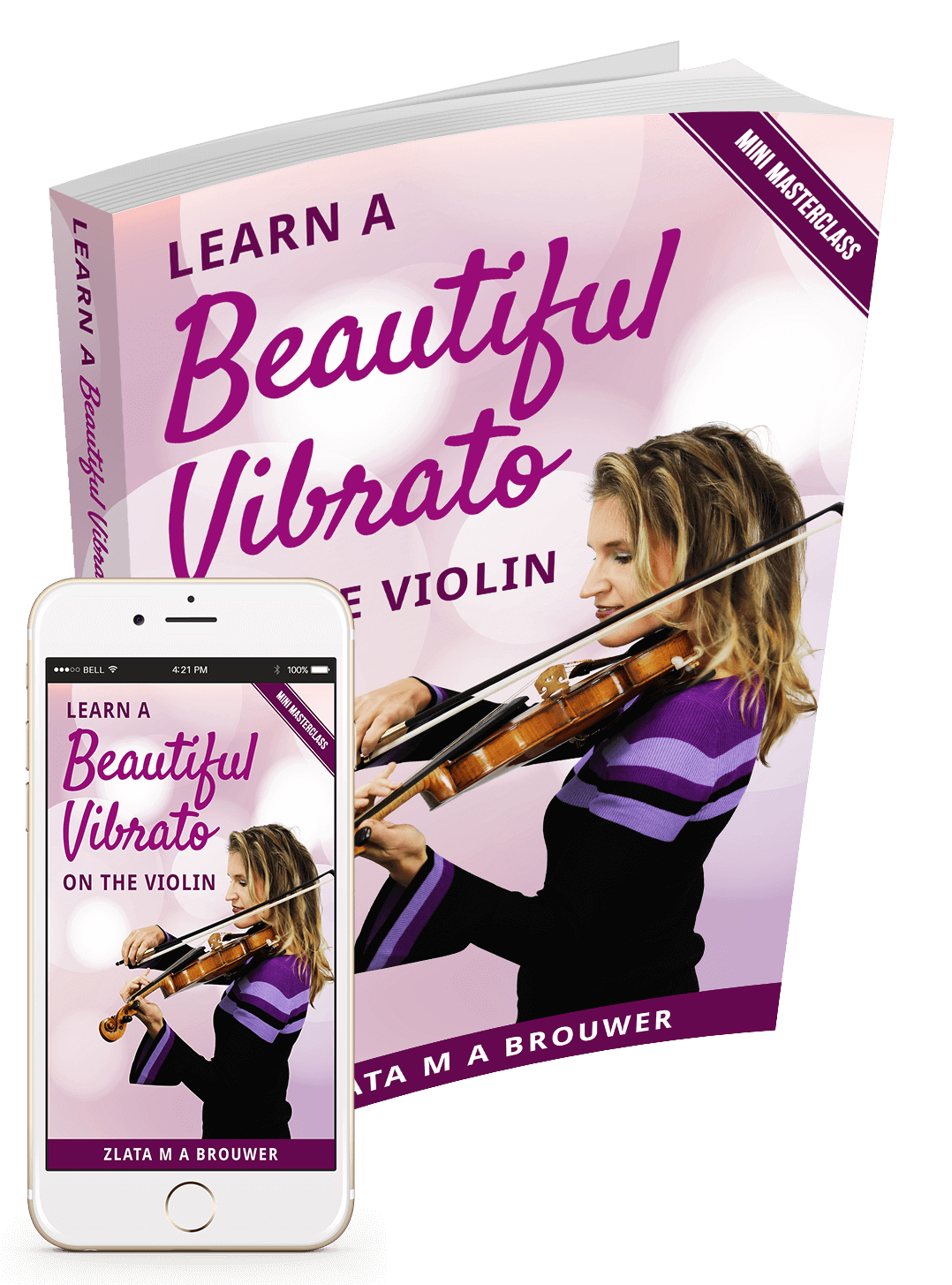Learn Nicola Benedetti’s Vibrato on the Violin
Get inspired by these violin vibrato practice tips from concert violinist Nicola Benedetti and improve your sound quality
I love it when world soloists invest in teaching the next generation of violin players
In her first video on vibrato Nicola shares the basic exercises she also recommends to more advanced players looking to improve their vibrato.
She compares the vibrato of various violin soloists and at 10:19 you’ll see an eight years old Nicola playing the Bruch concerto (!) to demonstrate how her vibrato developed throughout the years:
Foundational vibrato exercises
The foundation to learn vibrato is a relaxed left hand. Nicola demonstrates making large movements over the whole fingerboard with your finger gently placed on the string (not pressing down). You can make this movement smaller and smaller, but make sure it’s still a fluent and natural motion.
Arm vs wrist vs hand vs finger vibrato
I LOVE this quote from the above video and it’s exactly the process that I guide my Free your Vibrato students in:
‘Ideally, as we’ve mentioned at the beginning, you should have the options of doing a fantastical, magical combination of all the above! If we get the fundamentals right, your ears and your hands should guide you in the right direction. Your vibrato will be unique to you.’
First joint flexibilty
Just to be clear: this is not finger vibrato, but a necessary movement that your first finger joints make in vibrato. These joints should move along, whether you’re doing arm, wrist or hand vibrato. Eventually vibrato is about the movement of your fingertip on the string: that’s what makes the sound.
Benedetti explains practicing rocking motions with your finger in third position. Put your finger down, pull it down and move it back up. It’s best to see it in the video above. Start with the third finger, after that second, first and fourth.
Adding the bow
It’s important to first do vibrato exercises without the bow and add the bow later. In the beginning you’ll create an ambulance sound. Now it’s important to add rhythm to it. Start slowly with duplets, move to triplets, quarter notes, eight notes and sixteenth notes.
Continuous vibrato
We want to be able to have a vibrato that goes ‘through the notes’. A REAL continuous vibrato is vibrato myth nr 1, but we can create the ilusion of a continuous vibrato. You can practice it by trying to keep vibrating in the rhythm while changing fingers in the above exercise.
Practice slowly
You probably heard me saying it a thousand times, but Nicola emphasizes it in her video:
“Slow practice isn’t a holiday for the mind.It’s when it should be working hardest.Spend most time in the slow exercises.Set a timer and be absolutely focussed.”
Yup, I know it’s hard and I know you want to skip to an actual vibrato right away. However, the slow basic exercises will give you the best resulsts no matter your level of violin playing.

Learn a Beautiful Vibrato on the Violin
Join this free mini Mini Masterclass

Hi! I'm Zlata
Classical violinist helping you overcome technical struggles and play with feeling by improving your bow technique.
Advanced violin vibrato tips
In her second video on vibrato, Benedetti gives some very valuable tips on applying vibrato in music:
Start vibrating before note starts
In this way you have a beautiful vibrato right at the start of the note. It’s a bad habit to start vibrato after the note started.
Ears guide and hands follow
Don’t obsess about doing vibrato according to the book, but use it as a tool of expression. Of course you must do the exercises consistently and practice a lot. Once you got vibrato in your toolbox, let it follow the music and search for the sound you want to create.
Vibrato in high positions
Feel strength between finger and thumb, like strong anchors and free up your hand.
Vibrato on a very high note
Lock your second knuckle to give it some strength (demonstration in the above video).
Practice vibrato in double stops
Free up left hand movement by practicing vibrato in double stops thirds (major and minor thirds). It’s a heavy exercise for your hand, so be careful! Stop and reasses when you experience discomfort or pain.
Except practicing vibrato in third with your first and third finger and second and fourth finger, also practice vibrato in octaves with your first and fourth finger.
It’s important that you free up your thumb and don’t press it against the neck of the violin too hard.
Experiment with different sorts of vibrato to find your own style
It takes years to find your personal vibrato. Take your time and be creative in applying vibrato to music.
What’s your biggest takeaway from Nicola Benedetti’s violin vibrato lessons?
Let me know in the comments! I’d love to hear from you.

0 Comments